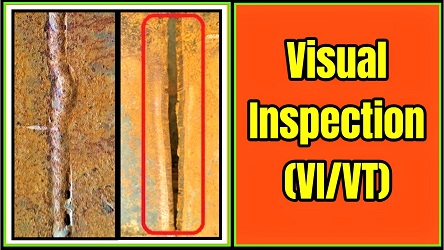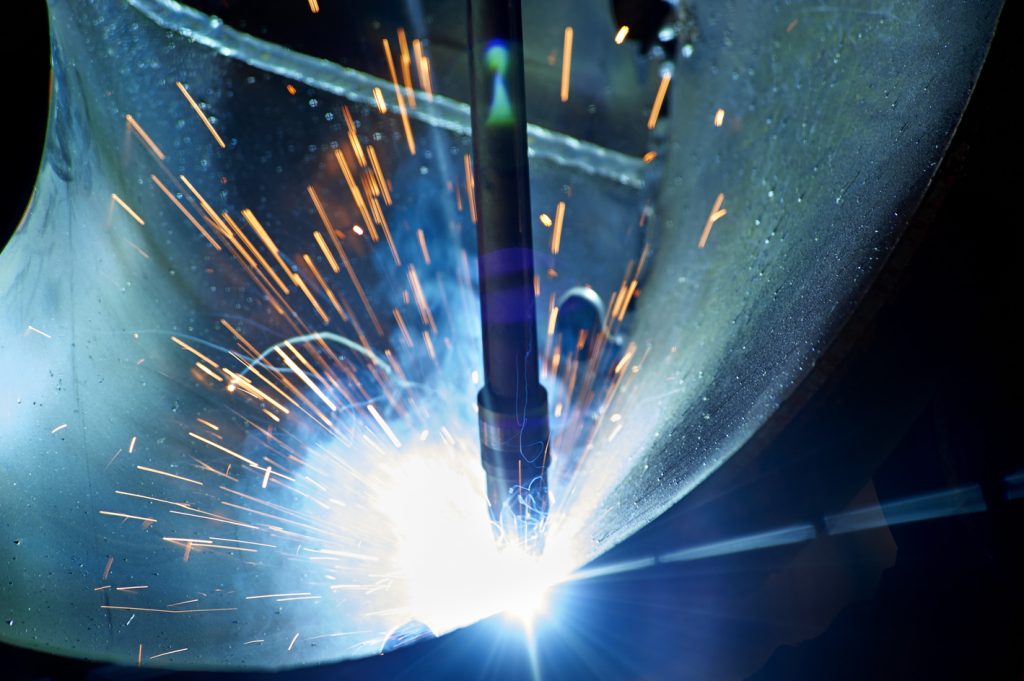The Ultimate Checklist for Welding Inspection Gilbert Arizona: Ensuring Safety and Precision
The Ultimate Checklist for Welding Inspection Gilbert Arizona: Ensuring Safety and Precision
Blog Article
A Comprehensive Guide to Welding Assessment: Recognizing Requirements, Techniques, and Best Practices for High Quality Assurance

Welding examination plays a pivotal role in guaranteeing the structural integrity and safety and security of bonded parts, demanding an extensive understanding of market requirements such as those developed by AWS and ASME. Different assessment methods, including ultrasonic and visual screening, are used to detect potential defects that could endanger top quality. In addition, implementing ideal techniques can significantly improve functional dependability and foster depend on among clients. As we explore these essential aspects, it becomes apparent that the implications of welding examination extend much past compliance, welcoming a closer evaluation of how these procedures shape sector criteria and practices.
Importance of Welding Inspection
Welding assessment plays an important duty in making sure the honesty and safety of bonded frameworks. It is a necessary process that confirms that welds comply with predefined specs, which is essential in various markets, consisting of construction, auto, and aerospace. By conducting thorough assessments, prospective issues such as splits, incomplete combination, and porosity can be recognized early, preventing devastating failings that can cause accidents or costly repair work.
The value of welding examination expands beyond mere compliance with policies; it likewise promotes trust fund with stakeholders. Customers and governing bodies anticipate guarantee that the frameworks they count on are built to withstand operational anxieties. Effective welding evaluation methods contribute to long-lasting toughness and efficiency of the frameworks, inevitably leading to minimized maintenance costs.
Additionally, welding examination advertises a society of quality within companies, urging adherence to best practices and continual enhancement. By integrating examination procedures into the welding operations, firms can improve their online reputation and develop themselves as leaders in quality control. Finally, the importance of welding evaluation hinges on its capacity to protect lives, make certain structural integrity, and promote industry criteria, making it an important aspect of welding procedures.
Key Industry Standards
Making sure compliance with essential sector criteria is important for keeping the high quality and safety and security of bonded structures. Numerous organizations develop these criteria to promote finest practices in welding and examination. Among one of the most recognized are the American Welding Culture (AWS) and the American Society of Mechanical Engineers (ASME), which give in-depth guidelines and specs for welding processes and assessment criteria.
AWS criteria, such as AWS D1.1 for structural welding, summary requirements for materials, design, and testing to ensure the honesty of welds. ASME codes, consisting of ASME Section IX, regulate the certification of welders and welding treatments, making certain regular quality in industrial applications. Internationally, the ISO 3834 standard highlights high quality requirements for blend welding, offering a framework for organizations to demonstrate compliance with worldwide finest methods.
Compliance with these criteria not just improves the reliability of welded structures however likewise reduces dangers related to structural failures. Moreover, adherence to market requirements is usually a requirement for regulative approvals and can substantially influence task requirements. Eventually, understanding and executing these essential criteria are crucial for reliable welding evaluation and quality guarantee.
Examination Techniques Review
Efficient welding evaluation relies on a variety of strategies developed to assess the top quality and stability of welds. These techniques can be broadly categorized right into non-destructive and damaging screening (NDT) techniques. Non-destructive testing strategies, which are commonly preferred in the industry, permit the analysis of welds without jeopardizing the integrity of the product.
Among one of the most frequently used NDT strategies are visual examination, ultrasonic screening, radiographic testing, and magnetic fragment testing. Aesthetic inspection is usually the primary step in the examination process, allowing inspectors to recognize surface blemishes and assess weld grain profiles. Ultrasonic testing uses high-frequency sound waves to identify interior imperfections and gauge the density of welds. Radiographic screening involves the use of X-ray or gamma-ray imaging to disclose inner problems, while magnetic bit screening works for discovering surface area and near-surface gaps visite site in ferromagnetic products.
Each strategy has its very own benefits and constraints, making it important for examiners to choose one of the most ideal method based on the particular requirements of the project, the materials involved, and the criticality of the welds being examined. This cautious selection supports and guarantees extensive evaluations safety and high quality requirements in welding operations.

Common Defects and Their Implications
An extensive understanding of typical problems in welds is essential for maintaining structural integrity and safety in bonded building and constructions. Welding flaws can substantially jeopardize the mechanical residential properties of the joint, causing failures that could jeopardize both employees and devices.
Common problems include porosity, which manifests as tiny gas pockets caught in the weld steel, deteriorating the total framework. Breaking is one more prevalent issue, often arising from fast air conditioning or incorrect joint design, bring about anxiety concentrations that can cause disastrous failings. Insufficient fusion takes place when the weld metal falls short to correctly bond with the base material, developing weak points that might result in separation under tons.
Various other noteworthy issues include damaging, where the weld grain erodes the base metal, and slag incorporations, which can hinder the weld's stamina. Each of these defects has particular implications; for instance, porosity can minimize ductility, while cracking directly impacts tensile toughness. Identifying and comprehending these defects throughout inspection is crucial for making sure and carrying out rehabilitative measures compliance with industry criteria, ultimately protecting the architectural stability of bonded settings up.
Ideal Practices for Top Quality Guarantee
Implementing best practices for quality control in welding processes is necessary for achieving ideal results and lessening flaws. One important technique is the establishment of clear welding treatments that follow market criteria and specifications. These procedures ought to consist of thorough guidelines regarding product option, joint preparation, and welding methods to make sure uniformity and quality.
Regular training and certification of welding employees are additionally crucial. Skilled welders that recognize the value of quality control are more likely to produce audio welds. Furthermore, executing a robust examination program, consisting of both non-destructive and visual screening (NDT), can assist determine problems early in the process, enabling prompt see post corrective activities.
Documents plays a crucial function in quality control. Preserving precise records of welding repairs, criteria, and evaluations ensures traceability and responsibility. Employing innovative innovations such as automated welding equipments can enhance precision and minimize the possibility for human error.
Finally, cultivating a society of quality within the organization motivates staff members to prioritize high quality in their job. By sticking to these best methods, companies can boost the honesty of their welding processes, eventually causing improved product high quality and reduced costs connected with rework and repair services.

Verdict
In final thought, welding assessment plays a crucial function in making sure the stability and security of bonded structures. By carrying out ideal Look At This techniques, companies can improve integrity, minimize upkeep expenses, and cultivate trust amongst customers, eventually contributing to successful welding procedures.
In addition, welding assessment promotes a culture of high quality within organizations, urging adherence to ideal methods and continuous renovation. In final thought, the relevance of welding evaluation exists in its capacity to protect lives, ensure architectural reliability, and copyright industry standards, making it an important aspect of welding procedures.
Amongst the most recognized are the American Welding Culture (AWS) and the American Society of Mechanical Engineers (ASME), which provide in-depth guidelines and requirements for welding processes and examination standards.
Ultimately, understanding and executing these crucial standards are important for reliable welding inspection and high quality guarantee.
Reliable welding evaluation depends on a selection of strategies made to assess the top quality and honesty of welds. - Welding Inspection Gilbert Arizona
Report this page